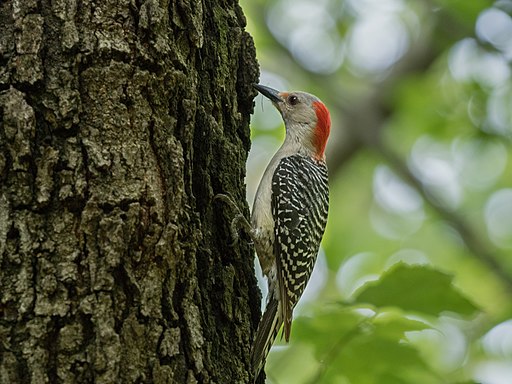Woodpeckers in Florida: Identification Tips and Environment Preferences
Woodpeckers in Florida: Identification Tips and Environment Preferences
Blog Article
Woodpeckers Unleashed: Exploring the Marvels of These Knowledgeable Tree Mountain Climbers
Woodpeckers, with their unique markings and balanced drumming echoing via wooded areas, hold an unique area in the avian globe. Their specialized makeup and adaptations allow them to navigate vertical surface areas with unmatched skill. Their mastery of tree climbing is just one aspect of their interesting actions. As we dig into the detailed details of woodpeckers' nesting routines, feeding techniques, and the recurring preservation initiatives to safeguard these amazing birds, a much deeper appreciation for their place in nature unfolds.
Anatomy and Adaptations
When examining the anatomy and adjustments of woodpeckers, one can observe exceptional functions that make it possible for these birds to grow in their specialized eco-friendly specific niche. Furthermore, woodpeckers have zygodactyl feet, with 2 toes encountering forward and two encountering backward, providing a company hold on tree trunks while they look for food or drum for communication.
Furthermore, woodpeckers have an unique tongue structure that is long, barbed, and sticky, enabling them to draw out pests from holes in wood. This customized adaptation enables woodpeckers to make use of a food resource that is inaccessible to numerous various other bird species. On the whole, the composition and adaptations of woodpeckers showcase the remarkable evolutionary services that have actually enabled these birds to flourish in their arboreal environment.
Drumming Actions
Having actually discovered the makeup and adaptations of woodpeckers, the emphasis now moves to recognizing their drumming actions, a distinct facet of their interaction and territorial display screens. Drumming is a crucial kind of communication among woodpeckers, serving numerous purposes such as establishing territories, attracting friends, and signaling alarm system. Each woodpecker species has an unique drumming pattern that helps people recognize members of their very own varieties and identify them from rivals or killers.
Woodpeckers produce drumming audios by rapidly pecking on resonant surface areas such as dead trees, utility posts, and even steel objects, developing a collection of balanced beats. The strength and speed of drumming can differ based upon the function; as an example, a rapid drumming series may signify hostility in the direction of burglars, while a slower and softer drumming pattern can show courtship (Woodpeckers in Florida). Furthermore, woodpeckers may adjust the regularity and period of their drumming to convey specific messages effectively
Nesting Behaviors
Checking out the nesting behaviors of woodpeckers reveals interesting insights right into their reproductive habits and habitat their website options. Woodpeckers are understood for their distinct nesting choices, frequently excavating cavities in trees to develop sheltered areas for increasing their young. These tooth cavities offer not just as a nesting site yet also as a secure sanctuary from killers and severe climate.
Woodpeckers display a high level of integrity to their nesting sites, commonly going back to the exact same area every year. This habits highlights the value of ideal habitat availability for their reproductive success. The selection of a nesting website is important for woodpeckers, with elements such as tree species, height, and decay phase playing substantial functions in their decision-making procedure.
Surprisingly, some woodpecker species are known to excavate several tooth cavities within their territory, giving themselves with alternative nesting choices. This technique might serve as a kind of insurance coverage against possible threats or disturbances to their key nesting site.

Feeding Methods
One of the most unique feeding habits of woodpeckers is drumming, which involves rapid pecking on trees to reveal insects underneath the bark. Woodpeckers are additionally recognized to excavate dental caries in trees to access surprise insect larvae or sap. Some varieties, like the acorn woodpecker, store nuts in specifically created holes called granaries.
Conservation Initiatives
In the middle of the complex feeding strategies showed by woodpeckers, the preservation efforts aimed at safeguarding these remarkable birds play an essential role in protecting their environments and populaces. Woodpeckers deal with different threats to their survival, consisting of habitat loss because of logging, environment modification modifying their communities, and crashes with synthetic frameworks such my review here as structures and lorries - Woodpeckers in Florida. Guardians are actively working to deal with these challenges and make sure the long-lasting well-being of woodpecker varieties

Education and public understanding campaigns are likewise vital elements of click this link woodpecker preservation efforts. By increasing recognition about the significance of these birds in preserving healthy forest ecosystems, guardians can gather assistance for environment conservation efforts and promote liable land monitoring practices. Via collaborative initiatives in between researchers, policymakers, and neighborhood areas, we can interact to protect a future where woodpeckers prosper in their all-natural environments.
Conclusion

Report this page